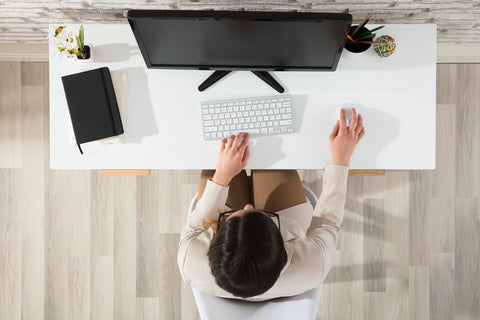
The ability to maintain good posture has a lot to do with your work environment. While establishing a stretching routine and an hourly posture correction Microstep can do wonders for your back and general well-being, at the end of the day, it’s much harder to sustain a neutral spine or other elements of good posture if your office setup won’t support them. Below are three tips that will make your workspace work for you, and put you on a fast track to improved posture
Adjust your furniture height
A healthy workspace consists of furniture that accommodates your specific size and shape, Alan Hedge, Ph.D., the director of the Human Factors and Ergonomics Research Group at Cornell University, tells the Times. If you’re able to select your own office furniture, look for a chair that easily reclines and has an adjustable height. Desks are tricky because many of them are built for writing with a pen, not for typing, Hedge notes. He suggests using a keyboard tray with a negative slope (which ensures the front of the keyboard is angled higher than the back) to your desk to avoid straining your wrists while you type.
Check your chair position
When you’re sitting in your chair, there should be about an inch of space between your outer thighs and the edge of the seat. When you sit back, journalist Melinda Wenner Moyer writes for The New York Times, the rim of your chair should touch the area behind your knees. And your feet should be flat on the floor, always. Hedge adds that it’s important to sit back while you work, so that your body is supported by the chair, and not by your spine.
Try out this keyboard trick
Handy ergonomic tip: If you’re sitting at a computer, the B and H keys on your keyboard should be aligned with your midline. If they’re not, you’ll want to readjust your desk or seat. Similarly, if you’re working on a monitor, it should be straight in front of you. You’ll know it’s at the right level when you don’t need to tilt your head up or down to see what you’re working on. Happy readjusting — and pain-free working!
Original article By Alexandra Hayes



